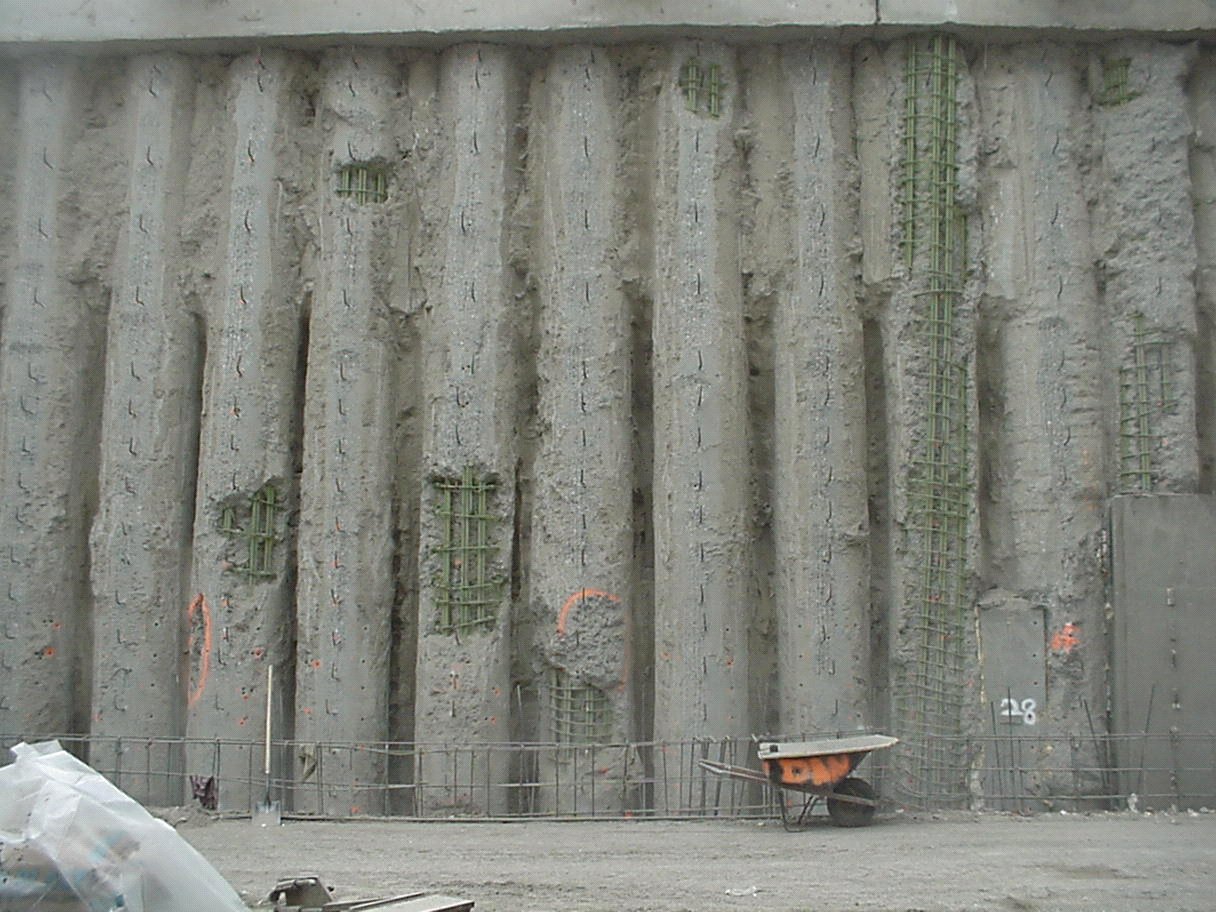
Home .
Testing Capabilities .
Research .
Downloads .
Contacts .
Links
Factors Affecting Anomaly Formation in Drilled Shafts
Introduction
Drilled shafts are large diameter cast-in-place concrete foundations that extend deep into the ground up to hundreds of feet. As the form-work (typically soil) is rarely removed, the actual shape and quality of the concrete goes largely unverified. In some instances where the shafts have been exhumed or at least partially exposed, aberrant conditions have been found. These anomalies were observed in the form of soil inclusions, concrete segregation, or cross-section reductions. This project investigated many of the mechanisms that lead to compromised shaft integrity.

The original problem statement for this project focused on the effects of the water table elevation on the integrity of drilled shaft foundations. This was in response to many anomalies found upon excavation around test shafts or for footings and their location appeared to coincide with the location of the water table. A review of construction sites where anomalies were exposed, showed that anomalies could appear in all locations along the shaft length and were apparently caused by numerous construction related factors. Further, initial lab tests concluded that the location of the water table did not contribute to the formation of anomalies in any of the lab scale specimens. In fact, when imperfections in the finished shafts were observed, almost always the location of these was markedly different from the location of the water table during casting. More critical, it seemed, were factors such as borehole cleanliness, construction (concrete placement) techniques, slump loss during the pour, slurry properties, and borehole open time.

Objectives
The overall objectives of this study were to identify factors contributing to anomaly formation in drilled shafts and to establish the degree to which those factors affect the final quality/performance of the foundation. The project involved both laboratory and full-scale construction and testing of drilled shafts.
Laboratory testing investigated: (1) concrete flow of tremie placed concrete, (2) sand accumulation in slurry supported excavations, (3) effects of casing extraction rate, and (4) side shear development as a function of concrete slump loss.
Full-scale testing investigated: (1) effects of concrete coarse aggregate size and rebar spacing on concrete flow, (2) permeability and aggregate distribution in concrete inside and outside the reinforcing cage, (3) side shear development as a function of slump, and (4) the effect of concrete placement rate on the concrete head differential (inside and outside the cage).
Contact Us
If you have questions or comments regarding Anomaly Formations, please contact Gray Mullins at gmullins@eng.usf.edu.


